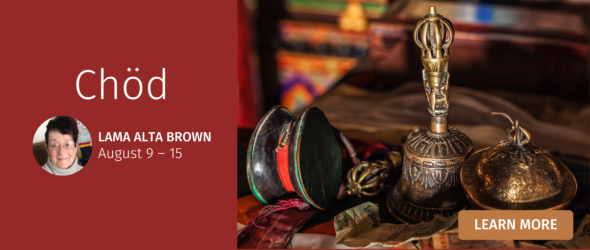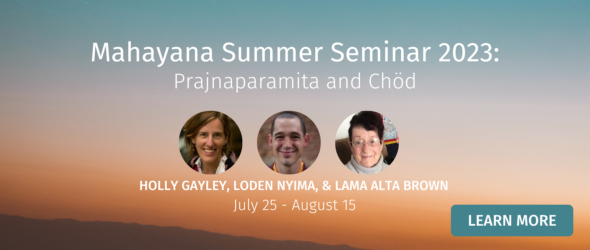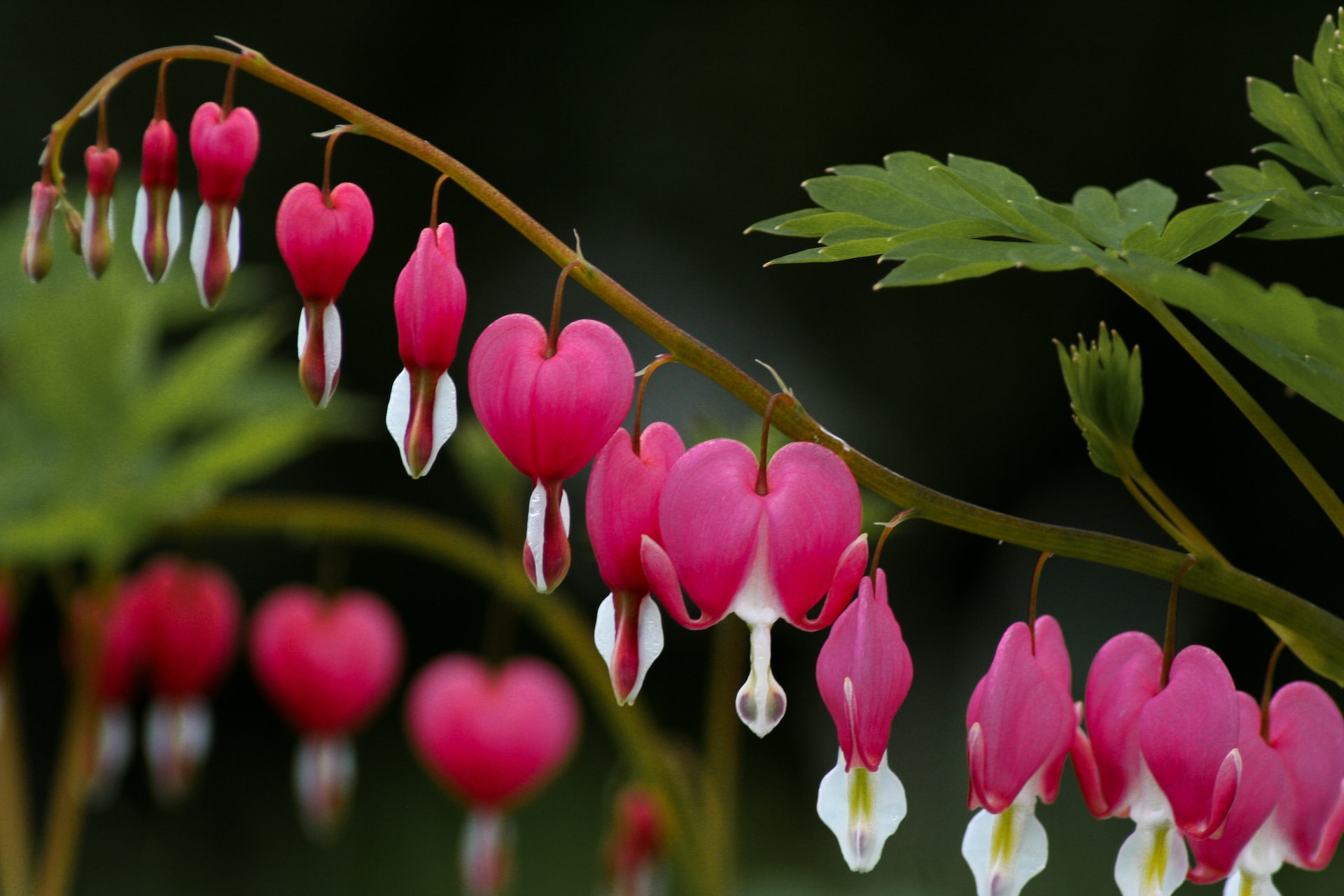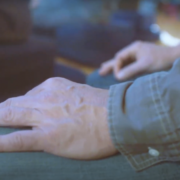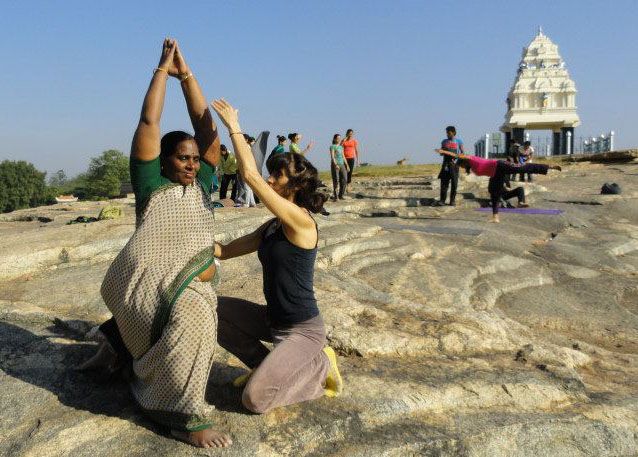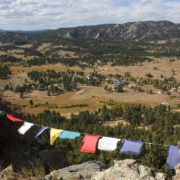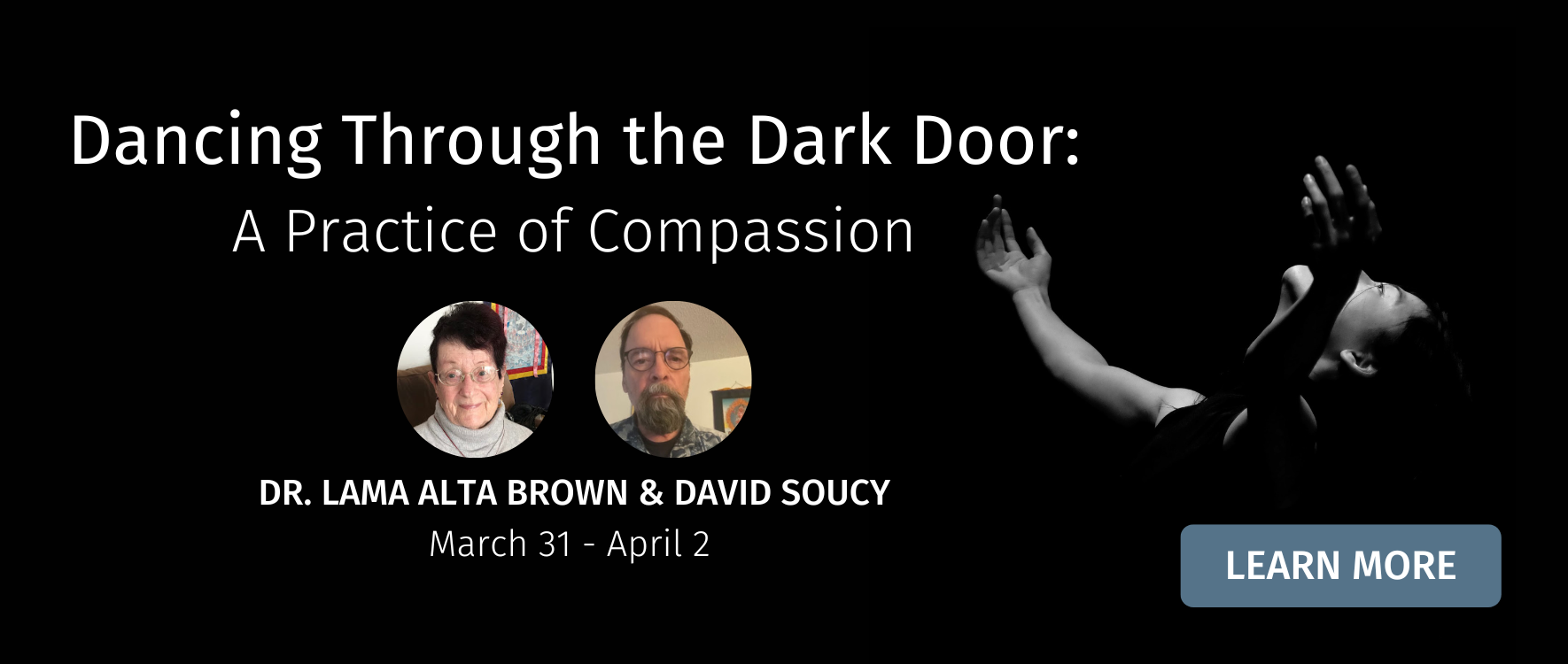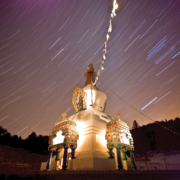Chöd Part 3
By Lama Alta Brown
Bliss that benefits other beings
One of the things I really wanted Khenpo Tsultrim to explain about the bliss experienced in Chöd practice was exactly how this bliss benefited other beings. I was suspicious about this bliss for a very good reason. The “blissed-out” bliss can produce a remarkably selfish state of mind. Producing that bliss can easily become an entirely self-centered preoccupation. I wanted him to explain how this bliss includes concern for other beings and how it also includes the intelligence to determine exactly what is genuinely beneficial.
Running a crisis center in the inner city, I had certainly become familiar with how easy it is to mistake what Trungpa calls idiot compassion for good intentions. Since most of us are generally not functioning from an enlightened perspective, it is often very difficult to separate the benefit for our own ego from what is genuinely beneficial for others. I was only too familiar with that particular blind spot.
Revealing our natural wisdom
When Khenpo explained that untying the knots in our chakras reveals our natural wisdom, he meant that enlightened intelligence is not something added from the outside, but is an integral component and an integral aspect of what is obscured by the mind we are most familiar with. The intelligence which will allow us to penetrate the machinations of self interest is built in. That intelligence only needs to be discovered.
Inviting in what we tend to exclude
As for the preoccupation with focusing on the felt needs to insure blissful states of mind, Khenpo explains that as the obscurations are removed and the chakras open and expand, so does the heart. The functions of ego that warn us to exclude what we regard as potentially threatening begin to disappear as the chakras are unblocked. We can then fearlessly invite in all that we had excluded before.
The essence of compassion
This is actually the essence of Chöd practice. Instead of creating a vajra sense to protect us from the various forms of negativity we fear, Chöd practitioners “call the demons and they come,” as Dzigar Kongtrul Rinpoche is fond of saying. In this way, the transmutation of the negative forces, including our own kleshas becomes possible.
As a result of this transmutation, the demons become our friends and helpers. The idea of our body, which we offer in such a terrifying way is transmuted into what our skandas actually are, the Five Buddha Family energies. These we can offer as a fundamental form of “pointing out instructions” given to all.
This is the great secret of the generosity that acts as the foundation of Chöd. It is the essence of the compassion which is the hallmark of this practice.
Read the first article in the series here Chöd Part 1
Read the second article in the series here Chöd Part 2
Join Lama Alta this summer for either or both of these programs!
About Lama Alta Brown

Dr. Brown completed her doctoral work at the University of Southern California, specializing in Buddhist Ethics. She wrote her dissertation on Mediation as a Bodhisattva’s Practice of Peace. She subsequently taught at the University of California at Berkeley through The Graduate Theological Union where she emphasized aspects of Buddhist ethics. She also taught for The Semester in India program through Antioch University and, for five years, taught weekend retreats through The Immaculate Heart college center at The Retreat Center La Casa De Maria. Dr. Lama Alta Brown currently leads an international Chöd sangha. Much of her training in compassionate activity developed out of her experience as the mother of six children.


